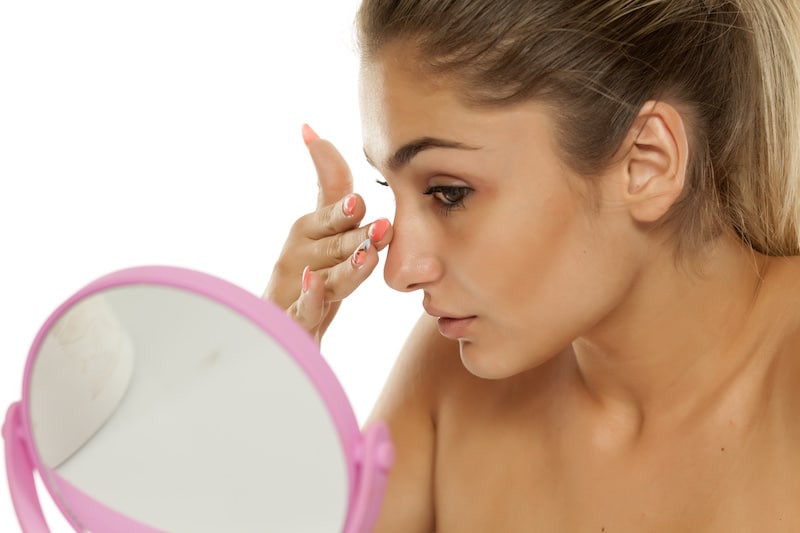Considering Rhinoplasty in Dubai? Here’s What You Need to Know

Rhinoplasty, commonly known as a nose job, is one of the most sought-after cosmetic procedures globally, and Dubai is emerging as a premier destination for those considering this transformative surgery. Whether you're looking to improve the appearance of your nose, enhance your facial harmony, or address functional issues such as breathing difficulties, rhinoplasty can be a life-changing decision. In this guide, we’ll delve into essential aspects you should know before undergoing Rhinoplasty In Dubai, including the types of procedures, the consultation process, recovery, and choosing the right surgeon.
Understanding Rhinoplasty
Rhinoplasty is a surgical procedure aimed at altering the shape or function of the nose. It can be performed for cosmetic reasons, such as reshaping the nose to better complement facial features, or for medical reasons, like correcting structural issues that affect breathing.
Types of Rhinoplasty
- Open Rhinoplasty: This method involves making an incision across the columella (the tissue between the nostrils) to access the underlying structures of the nose. Open rhinoplasty allows for greater visibility and precision, making it suitable for more complex cases.
- Closed Rhinoplasty: In this technique, incisions are made inside the nostrils, resulting in no visible scarring. Closed rhinoplasty is generally less invasive and may be preferred for minor adjustments.
- Non-Surgical Rhinoplasty: Also known as liquid rhinoplasty, this involves the use of dermal fillers to reshape the nose without surgery. While this option is less permanent and involves no downtime, it can be a good choice for those looking for subtle changes.
The Consultation Process
Before committing to rhinoplasty, you’ll need to schedule a consultation with a qualified surgeon. During this meeting, you can expect:
- Discussion of Goals: Be prepared to share your reasons for wanting rhinoplasty, your desired outcome, and any concerns you may have.
- Physical Examination: The surgeon will assess the structure of your nose and face, discussing factors that may influence the results.
- Imaging: Many surgeons utilize computer imaging to help you visualize potential outcomes, providing a clearer understanding of what to expect.
- Review of Medical History: It's crucial to disclose any pre-existing medical conditions, allergies, or medications you're taking, as these can affect your eligibility for surgery.
Choosing the Right Surgeon
Selecting a qualified and experienced surgeon is one of the most critical steps in the rhinoplasty process. Here are some tips for finding the right professional in Dubai:
- Check Qualifications: Ensure your surgeon is board-certified and has specialized training in facial plastic surgery or otolaryngology.
- Experience: Look for a surgeon with a proven track record in rhinoplasty. Review before-and-after photos of their previous patients to gauge their aesthetic style and results.
- Patient Reviews: Research online reviews and testimonials to gain insights into the experiences of past patients.
- Consult Multiple Surgeons: Don’t hesitate to seek opinions from multiple surgeons. This will give you a broader perspective and help you feel more confident in your decision.
Preparing for Surgery
Once you’ve chosen your surgeon and scheduled your procedure, preparation is key. Here’s what you should consider:
- Preoperative Instructions: Follow your surgeon's specific instructions regarding diet, medications, and lifestyle changes before surgery.
- Avoid Certain Medications: You may be advised to avoid blood thinners, such as aspirin or certain supplements, in the weeks leading up to the surgery to minimize the risk of bleeding.
- Arrange for Recovery: Plan for someone to accompany you home after the surgery and assist you during your initial recovery period.
The Surgery
Rhinoplasty typically lasts between one to three hours, depending on the complexity of the procedure. It is usually performed under general anesthesia or local anesthesia with sedation, ensuring you remain comfortable throughout the process.
Recovery and Aftercare
Post-operative care is crucial for achieving the best results. Here’s what to expect during your recovery:
- Swelling and Bruising: It’s normal to experience swelling and bruising around the nose and eyes. These symptoms typically subside within a week or two.
- Nasal Splint: A splint or cast may be placed on your nose to support its new shape during the healing process. It’s usually removed within a week.
- Follow-Up Appointments: Attend all scheduled follow-up appointments with your surgeon to monitor your healing progress.
- Limit Physical Activity: Avoid strenuous activities, including exercise, for at least a few weeks post-surgery to minimize the risk of complications.
Potential Risks and Complications
As with any surgical procedure, rhinoplasty carries risks. These may include:
- Infection: While rare, infections can occur and may require antibiotic treatment.
- Scarring: Open rhinoplasty may leave visible scars, although skilled surgeons strive to minimize this risk.
- Breathing Difficulties: Some patients may experience temporary or permanent changes in their ability to breathe through the nose.
- Dissatisfaction with Results: It’s essential to have realistic expectations. If you’re unhappy with the results, a revision surgery may be needed.
Conclusion
Rhinoplasty can be a transformative procedure, enhancing both the appearance of your nose and your overall confidence. By choosing to undergo rhinoplasty in Dubai, you gain access to world-class surgeons, state-of-the-art facilities, and a thriving wellness culture. However, it's essential to approach this decision with careful consideration and thorough research. With the right preparation, a skilled surgeon, and realistic expectations, rhinoplasty can help you achieve the nose you’ve always desired. Embrace the opportunity to enhance your natural beauty and take the first step towards your transformation today!